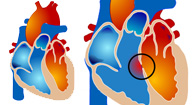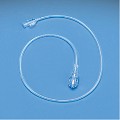
Cardiac catheterization (CC) is a procedure in which a catheter is placed into a vessel or chamber of the heart to obtain detailed information about it. This is usually done for interventional and diagnostic purposes. These medical instruments include a pulse oximeter, ECG, X-ray, and angiography. Apart from this, there are also several other instruments that are used in cardiac catheterization. Here I will list all the instruments that are used in cardiac catheterization.
The most common of these is a cardiac catheter, which is usually made of plastic and inserted into an artery. When it is inserted into an artery, it connects to the patient’s vein, which connects to a device that records data from the artery. After that, the machine makes the necessary calculations and sends them to the receiving device, which reads the data.
In this case, the device is used to diagnose the presence of patients with coronary artery disease in a patient. This tool is used to display the results of a blood test on a machine that contains the results. One thing you need to be aware of is that there are certain risks associated with this type of instrument, such as mixing blood. Moreover, it is not very reliable if the blood flow is blocked.
These are the most common ones used in cardiac catheterization. Now that we have seen what these tools are and what applications they have, let’s take a look at the types of catheters. The first thing I would like to point out is metered cardiac catheter. This catheter is attached to a pulse oximeter and the patient can get a measurement with a finger or even use an infrared camera. When a patient uses this device, the device records the amount of oxygen passing through the arteries and the amount of carbon dioxide that is used by the body.
In addition to this, there are also other types of cardiac catheters such as central catheter and peripheral catheters. Central catheters are used primarily to catheterize a patient’s heart. For example, this catheter can be used for cardiogenic shock, arterial blood gases, blood tests, and angina pectoris.

On the other hand, peripheral catheters are mainly used for small applications such as recording patients’ blood pressure and fluid flow through veins. With this tool, the needle portions of the catheter are placed inside the veins. As long as the needle is attached to the catheter, it is able to obtain detailed information about the fluid flow that the patient is receiving. This instrument can also control arterial blood flow and the flow of fluid that collects in the veins. It is also very important to note that you must follow the instructions when using this tool.
To use these tools, all you have to do is go to a hospital that provides such services and you just need to talk to your nurse or healthcare provider about it. After that, you just need to insert the catheter into your own vein. You have to follow the instructions and if all goes well, you just need to use the tool.
I hope you have learned a lot from this article because you now have knowledge of the different types of cardiac catheters that are used in this process. You can learn a lot by reading this article. In addition, you can also receive free reports online, which can help you learn about the various features available in the tool.